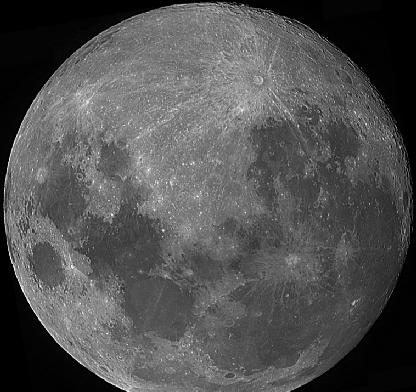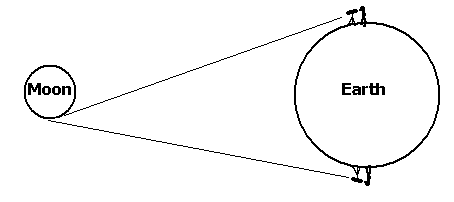Observing the Moon: Getting to Know the Moon
Jack Kramer
It's certainly helpful to know which features on the moon will be in view on any given night. The image below is oriented as seen in many telescopes, with south up and west to the right. You'll have to determine how it's oriented in your own scope.

The "left" side of the moon as shown above is about what you'll see when you observe during the first quarter phase. This phase occurs when the moon is between 7 and 8 days old (7 to 8 days after the new moon). Remember that the lunar month from one new moon to the next is about 291/2 days; this is referred to as a lunation. At about 7 days past new, the edge of the highly detailed Mare Imbrium region is just coming into view, but it'll be about another 3 days before the Crater Copernicus is fully in view.
Then there's another thing to take into consideration: the moon's libration in latitude and longitude. In its simplest terms, this is a sort of "wobbling" back and forth. At any one time that you gaze at the full moon, you're seeing 50% of its surface. While the moon always keeps the same face toward us, it's not exactly the same. Due to a slight tilt in the moon's axis, at certain times we can see slightly beyond its north or south poles. And depending upon the angle at which we view the moon from the Earth's surface, features slightly beyond the eastern and western limbs become visible. Over a span of time, we actually end up seeing about 59% of the moon's surface -- slightly beyond its poles and "around the edges". For most purposes, this doesn't make a big difference, but sometimes you'll notice that craters near the limb seem closer to or farther from the limb than as shown on your lunar atlas. If you were able to do so, you could take a series of photographs of the limb, then photograph the same limb about two weeks later. Then compare how the craters at the limb appear on the various photos. The drawing below represents the Earth and moon looking "down" over the poles. It presents an oversimplified (and obviously not to scale) illustration of why an observer on one side of the Earth sees a bit more or less of certain features at the moon's limb than the guy or gal who happens to be on the other side of the Earth at this particular time. The radius of the Earth is 1/60 the distance to the moon, which is a significant baseline distance. It suggests why we see different features at the limb depending upon where we happen to be standing as the Earth/moon geometry changes.
�
�Another reason for this libration is due to the moon's eliptical orbit. Its speed of orbital revolution around the Earth varies slightly, while its speed of rotation about its axis is constant.
The best way to become proficient at finding your way around the moon is to do it often. A large-scale lunar atlas is a necessity, and it's helpful to have a book devoted to lunar observing. It also helps getting a start if you have an observing plan -- one or two particular objects that you're going to set out to locate. But don't be surprised if they appear somewhat different than as portrayed on your lunar atlas. Features on the moon often take on dramatically different appearances from night to night as the angle of sunlight changes. We're able to see more detail on the moon than on any other single object in space.
A moon is a terrible thing to waste!
Published in the October 1998 issue of the NightTimes




